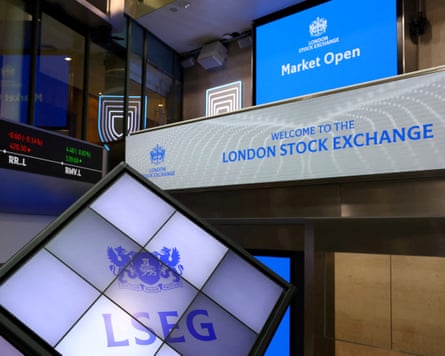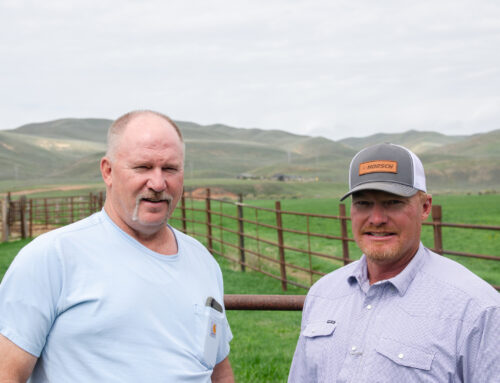Investing apps: which offer the most for beginners?
June 21, 2025
Rachel Reeves and her government colleagues are keen to get more Britons investing in the stock market. She said recently that a lot of money was being put into cash savings accounts “when it could be invested in equities, in stock markets, and earn a better return”.
The good news is that the rise of DIY tools and mobile apps means it is now easier than ever to get investing. However, the vast array of options can make it daunting to know where to start.
For new investors who don’t have the time or confidence to manage a portfolio, “robo-advisers” can be a good option. They might sound like something out of a sci-fi movie but are basically online investment platforms that use technology to help automate the process. Most are app-based and typically offer a range of ready-made investment portfolios tailored to your individual preferences.
You usually fill in a short questionnaire to determine your goals, how long you want to invest for, and how much risk you want to take.
Typically, the longer you are investing for, the more risk you can afford to take. But you need to factor in your personal attitude to risk, too. Stocks and shares have historically delivered better returns than savings accounts, but there is also a chance you could lose money – and there will be ups and downs along the way – so you need to feel comfortable about this before taking the leap.
The ready-made portfolios typically invest in a selection of exchange traded funds (ETFs). These are low-cost funds that track a chosen index such as a UK or US stock market, government bonds (such as UK gilts or US Treasury bills) or the price of a commodity such as gold.
The apps put a selection of these funds together to create a balanced portfolio which spreads your money across different assets.
So which of the apps – if any – is right for you? We looked at some of the most popular ones to see how they stack up.

Nutmeg
Who? One of the first robo-advisers to hit the market, Nutmeg launched in 2012, and in 2021 it was bought by the investment company JPMorgan Chase. It has more than 200,000 users in the UK, with more than £4.5bn invested through the app.
Minimum investment: £500 for Isas and pensions, £100 for lifetime Isas and junior Isas.
Investment choice: Nutmeg has different tiers of service, which will affect costs. With its fully managed option, you choose a risk level from one to 10, and a team monitors the portfolio and makes regular adjustments. With the fixed allocation option, there are five risk levels and the portfolio is set by the investment team once a year.
Fees: Nutmeg says the total charge for the fully managed option is 0.98%. Someone investing £3,000 would pay about £29.40 a year. For fixed allocation, it is 0.65% – about £19.60 a year for that example.
We like: Nutmeg is transparent about performance, and you can see how its fully managed portfolios have done over the past decade. For example, the 6/10 risk portfolio has returned 43.4% over 10 years, compared with 36.7% on average for comparable funds. The 5/10 portfolio is up 31.9% over that time, compared with 36.7% for its peers.
Anything else? For those who want more support, Nutmeg offers free guidance to help with general questions, and full financial advice starting from £900.
Moneybox

Who? Launched in 2016, Moneybox specialises in savings and investments and is reported to now have more than 1.5 million customers and in excess of £10bn of assets under management.
Minimum investment: You can open an account with as little as £1.
Investment choice: There are just three core options: cautious, balanced and adventurous. The cautious option has just 15% in company shares, with 40% in bonds and 40% in cash, which makes it less risky but means your returns may not be as impressive as with other options. The adventurous option has 80% in shares, 15% in property and 5% in bonds.
Fees: A £1-a-month subscription fee covers trading costs. Then there’s a 0.45% platform fee, plus the cost of your actual investments – 0.17% for the core funds. Moneybox says someone with £3,000 invested in its balanced fund would pay total charges of 0.85% – about £25.60 a year.
We like: The round-ups feature. Link your bank account or credit card to the app, and it will round your spending to the nearest pound and automatically invest the difference. For example, if you spent £1.87, it would be rounded to £2, with 13p invested – a handy way to boost your contributions.
Anything else? Those who feel more confident can pick their own ETFs to invest in rather than the ready-made portfolios. Or, if you want to cherrypick specific companies, there is a limited range of stocks to select – though currently only US stocks are available.
Dodl
Who? Dodl is the newest of this cohort, launched only in 2022, but it is owned by the wealth management giant AJ Bell, which has been around since 1995. Dodl offers a simpler process and lower minimum investment level than its parent company, and a more limited choice of investments.
Minimum investment: £100, or set up a direct debit from £25 a month.
Fees: 0.15% a year, with a minimum of £1 a month, plus the cost of your investments – 0.31% for the core range. Someone with £3,000 invested would pay about £19.30 a year.
Investment choice: The range of ready-made funds, run by AJ Bell, are labelled by risk level – from cautious to global growth. You can also choose individual shares, with the ability to browse by region (either the UK or US) and sector (such as finance, health or technology).
We like: The option to invest by theme, which directs you to a relevant ETF for your trend of choice. For example, the “On top of the world” theme invests in the HSBC FTSE All-World, an index of some of the biggest companies around the globe, which charges 0.13%. Other options include “the home team” for UK-focused investments, and “robo revolution” for a fund investing in robotics companies.
Anything else? It pays a competitive 4.25% (variable) on cash you have not yet invested.

Wealthify
Who? Founded in 2014, Wealthify is now owned by the insurance giant Aviva and has about 100,000 customers. It has a big focus on keeping things simple and jargon-free.
Minimum investment: Currently £1 for Isas and £50 for pensions, though from Wednesday 25 June the minimums will be £1 for junior Isas, and £500 for stocks and shares Isas and pensions.
Investment choice: There are five risk levels: cautious, tentative, confident, ambitious and adventurous. The cautious portfolio has 85% of its assets in government bonds and just 5% in company shares. The adventurous option has 74% in shares and 14% in government bonds, and also invests in property and infrastructure.
Fees: The platform fee is 0.6%, which includes the cost of managing your portfolio. The cost of your investment on top is 0.16% for a general portfolio, and 0.7% for the ethical option. That adds up to £22.80 a year, or £39 for the ethical option, for someone with £3,000 invested. There is no minimum fee.
We like: Its outlook page, which offers a short overview of the prospects for different investment regions and assets. It’s a handy way for investors to learn a bit more without hours of research.
Anything else? Wealthify boasts of various customer service awards on its website – a good reminder to consider factors aside from fees and the investment range. Always be sure to do your own research and read independent reviews before choosing a provider.
Moneyfarm
Who? Moneyfarm originated in Italy and launched in the UK in 2016. It now has about 160,000 active users and more than £5bn in assets under management. The firm has backing from big investment groups such as M&G and Allianz.
Minimum investment: £500.
Investment choice: There are seven risk levels for its managed funds, which are regularly rebalanced by the investment team. For example, the 6/7 risk option has 72% of its assets in developed market companies and 10% in emerging markets companies, while the 2/7 risk option invests predominantly in bonds.
Fees: Someone with £3,000 in the actively managed option would pay management fees of 0.75%, plus 0.3% for their investments – equivalent to about £31.56 a year. For the fixed allocation options, which are adjusted just once a year, the management fee is 0.45% plus 0.17% for the investments – a total of 0.62%, or about £18.60 a year for that example.
We like: It is easy to see a breakdown of each portfolio on the website to understand how it is invested. You can see how it invests by asset type, region and sector – and there’s a simple explanation of each, too.
Anything else? As with most of these apps, there is an option to apply environmental, social and governance (ESG) criteria to your investments, which is good for any investor worried about where their money is going. This will screen out certain investments – for example, heavy polluters or companies with a poor human rights record. Selecting this option typically increases the costs.

Need to know
-
Before choosing a robo-advice app or service, make sure the company is regulated by UK watchdog the Financial Conduct Authority (FCA).
-
It should also be a member of the Financial Services Compensation Scheme (FSCS), the UK’s official consumer “lifeboat” scheme which protects up to £85,000 of your money if your provider collapses.
-
Most apps offer a variety of accounts, but a stocks and shares Isa is usually the best choice. You can put up to £20,000 a year into an Isa, and any interest or growth is sheltered from HMRC, meaning you get to keep all of your gains.
-
When it comes to fees, you are usually charged a percentage of the amount you invest – for example, if you invested £1,000 and the fee was 1%, you would pay £10 a year. However, sometimes there is a minimum charge, so check carefully what you would pay.
Search
RECENT PRESS RELEASES
Related Post



